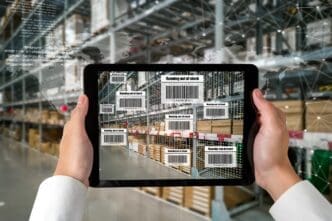Executive Summary
The Trajectory So Far
The Business Implication
Stakeholder Perspectives
The convergence of ambient computing and artificial intelligence is fundamentally reshaping how businesses operate, interact with customers, and innovate, demanding that organizations across all sectors prepare for a future where technology seamlessly integrates into daily environments. This powerful combination enables proactive, context-aware systems that anticipate needs, automate tasks, and deliver hyper-personalized experiences, moving beyond traditional device-centric interactions to create intelligent ecosystems. From enhancing operational efficiencies in manufacturing to revolutionizing customer engagement in retail and healthcare, AI-powered ambient computing is not merely an upgrade but a transformative paradigm shift, compelling businesses to strategize for deeper technological integration, ethical data practices, and new service models to remain competitive and relevant.
Understanding Ambient Computing
Ambient computing refers to a technological paradigm where computing power is embedded ubiquitously in the environment, becoming invisible and always-on. Unlike traditional computing, which requires direct interaction with devices, ambient computing operates in the background, sensing, processing, and responding to its surroundings. Its core characteristic is the ability to fade into the environment, providing services and information without explicit user commands, making technology feel intuitive and natural.
This concept envisions a world where homes, offices, vehicles, and public spaces are infused with intelligent sensors and interconnected devices. These systems collect data on user behavior, environmental conditions, and contextual cues to provide personalized and proactive assistance. The goal is to create environments that are aware of their inhabitants’ needs and preferences, responding intelligently to enhance comfort, productivity, and safety.
The Indispensable Role of AI
Artificial intelligence is the critical engine that powers ambient computing, transforming raw environmental data into actionable insights and intelligent responses. Without AI, ambient computing would merely be a network of sensors and devices lacking the ability to understand context, predict needs, or personalize interactions. AI algorithms, particularly those in machine learning, natural language processing, and computer vision, enable these systems to learn from patterns, recognize intent, and make decisions autonomously.
Machine learning allows ambient systems to continuously improve their understanding of user preferences and environmental dynamics over time. Natural language processing facilitates intuitive voice commands and conversational interfaces, making interactions with the environment seamless. Computer vision enables systems to interpret visual information, recognizing individuals, objects, and gestures, further enriching the contextual awareness of ambient environments.
Reshaping Business Operations
The integration of AI and ambient computing offers profound opportunities to optimize and transform business operations across various industries. By embedding intelligence into physical spaces and workflows, companies can achieve unprecedented levels of efficiency, automation, and insight.
Enhanced Efficiency and Automation
In manufacturing, smart factories leverage ambient sensors and AI to monitor machinery, predict maintenance needs, and optimize production lines in real-time. This reduces downtime, improves product quality, and significantly lowers operational costs. Retail environments benefit from smart shelving that tracks inventory, identifies popular products, and even detects theft, streamlining stock management and loss prevention.
Office spaces are becoming intelligent, with ambient systems managing lighting, climate control, and meeting room availability based on occupancy and schedules. This not only saves energy but also creates a more comfortable and productive work environment. Logistics and supply chains are also being optimized through pervasive sensing and AI, enabling real-time tracking, predictive routing, and automated warehousing.
Personalized Customer Experiences
Ambient computing, fueled by AI, allows businesses to deliver hyper-personalized experiences that anticipate customer needs before they are articulated. In retail, customers can receive context-aware promotions on their devices as they browse, based on their past purchases and real-time location within the store. Smart mirrors can suggest outfits and accessories, creating an interactive and tailored shopping journey.
Hospitality venues can offer personalized room settings, automated check-ins, and proactive service based on guest preferences and movements within the hotel. Healthcare providers can utilize ambient monitoring in homes to track vital signs of elderly patients, sending alerts for anomalies and ensuring timely intervention, thus shifting from reactive to proactive care. This level of personalization fosters deeper customer loyalty and satisfaction.
New Business Models and Revenue Streams
The shift towards AI-powered ambient computing is not just about improving existing operations; it’s also a catalyst for entirely new business models and revenue streams. Companies are exploring innovative ways to monetize the data and services generated by these pervasive technologies.
Subscription-based models for ambient services, such as smart home security or personalized health monitoring, are gaining traction. Businesses can offer premium tiers that provide advanced analytics, proactive maintenance, or exclusive access to new features. Data monetization, though requiring careful ethical consideration, presents opportunities to sell anonymized and aggregated insights derived from ambient data to third parties, such as urban planners or market researchers.
Furthermore, the development of ambient ecosystems fosters partnerships and interoperability. Companies that create open platforms or integrate seamlessly with other ambient devices and services can become central to a broader connected experience, driving network effects and value creation. This encourages a shift from selling standalone products to providing integrated solutions and ongoing services.
Key Industries Impacted
Virtually every industry stands to be transformed by the pervasive nature of AI and ambient computing, with some sectors experiencing particularly profound shifts.
Retail and E-commerce
Retailers are adopting ambient technologies to create frictionless shopping experiences, from smart carts that track purchases automatically to personalized in-store guidance. E-commerce platforms can leverage ambient data from smart homes to anticipate replenishment needs for groceries or household items, enabling proactive ordering.
Healthcare
The healthcare sector is seeing advancements in remote patient monitoring, smart hospitals that optimize resource allocation, and AI-driven diagnostics. Ambient sensors can monitor patient movement to prevent falls, track medication adherence, and provide continuous health data to clinicians, improving patient outcomes and reducing hospital readmissions.
Manufacturing and Logistics
Industry 4.0 principles are heavily reliant on ambient computing and AI for smart factories, predictive maintenance, and optimized supply chains. Real-time data from sensors on machinery and in warehouses allows for dynamic adjustments, minimizing waste and maximizing efficiency.
Automotive and Transportation
Autonomous vehicles are a prime example of ambient computing, where the car acts as an intelligent, context-aware environment. Beyond self-driving, ambient AI enhances in-car experiences with personalized infotainment, proactive safety features, and seamless integration with smart city infrastructure.
Hospitality and Real Estate
Hotels are implementing smart rooms that learn guest preferences, while smart buildings in real estate optimize energy consumption, security, and space utilization through integrated ambient systems. This creates more attractive, efficient, and responsive living and working spaces.
Challenges and Considerations
While the opportunities are vast, businesses must navigate significant challenges to successfully implement AI-powered ambient computing. Concerns around privacy and data security are paramount, as ubiquitous data collection raises questions about how personal information is gathered, stored, and used. Companies must implement robust security measures and transparent data governance policies to build user trust.
Ethical AI considerations, including bias in algorithms, transparency in decision-making, and accountability for autonomous actions, are critical. Businesses must ensure their ambient AI systems are fair, unbiased, and operate within ethical guidelines. Interoperability remains a technical hurdle, as ensuring seamless communication between diverse devices and platforms from different manufacturers is essential for a truly ambient experience. Finally, the significant investment required for infrastructure development and the potential for user acceptance issues, where individuals may feel uncomfortable with pervasive monitoring, also demand careful strategic planning.
Embracing the Ambient Future
The fusion of ambient computing and artificial intelligence represents a profound technological shift, promising to deliver unparalleled efficiency, personalization, and innovation across every business sector. Organizations that proactively embrace this transformation, investing in robust AI capabilities, prioritizing data privacy and ethics, and fostering interoperable ecosystems, will be best positioned to unlock new value and redefine their industries. The future of business is ambient, and readiness today means securing a competitive edge tomorrow.








